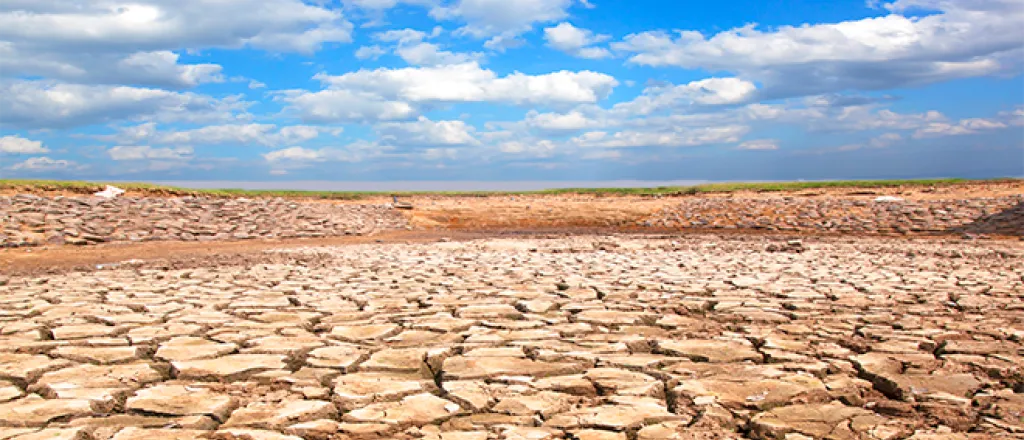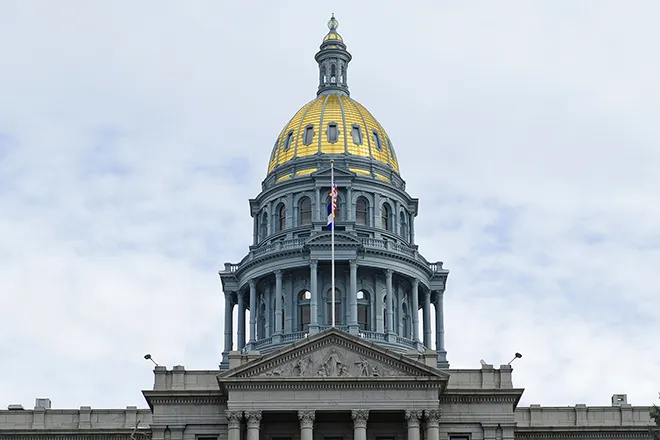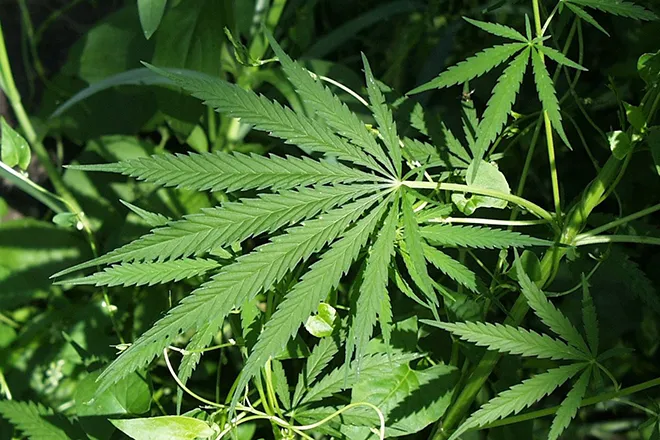
Prairie lawns a more sustainable alternative for warmer, drier midwest
(Nebraska News Connection) In the midst of droughts during the state's driest year on record, homeowners struggle to maintain the ideal image of the impeccably-manicured, emerald-green front yard.
As the weather turns to fall and Nebraskans finish up summer's final yard work and prepare their lawns for cold weather, many may find themselves frustrated with brown, patchy grass or struggling garden beds.
An alternative landscape is growing in popularity among those who find themselves tiring of grass upkeep and hesitant of heavy water usage: the prairie lawn.
Also commonly referred to as natural gardens, residential prairies or meadow lawns, a prairie lawn consists of a varied collection of grasses, wildflowers, shrubs and trees that are native to the Great Plains.
Benjamin Vogt owns and operates Monarch Gardens, a prairie-inspired landscape design firm that specializes in lawn-to-meadow conversions. Growing up, his mother was an avid gardener and he decided to follow in her footsteps by gardening at his own home beginning in 2007. Vogt's interest only grew and he started designing full-time in 2016.
Vogt uses almost entirely native plants in his designs, citing their resilience and abilities to retain water in soil and avoid topsoil erosion. He also believes that native plants are a crucial defense against climate change and increasing numbers of extreme weather events.
"I firmly believe native plants are going to be the most adaptable plants we're going to have for climate change," he said. "These plants will give us more buffer than if we're using exotic species, and I am definitely a native plant champion for that reason."
Indeed, the Midwest is beginning to see the effects of climate change. According to Nebraska state climatologist Martha Shulski, about 86% of the state is currently under drought conditions. She reported that although it's normal for Nebraska to have both floods and droughts, the frequency of these weather events is becoming amplified due to climate change.
The growing season is becoming longer, warmer and drier, Shulski said. As dry soil cracks apart, heavy rains run straight through the ground, so rain becomes less effective when it finally does fall. She views recent climate trends as hints that people must look at alternatives to traditional lawns, as droughts grow more frequent and water shortages persist.
Shulski sees an opportunity to mitigate future water shortages through lawn conversions, as native plants can withstand moving from extremely wet years to extremely dry years better than non-native plants. According to Shulski, 2019 was Nebraska's third-wettest year on record, yet in 2020 the state entered the drought that is still ongoing today.
In fact, she strongly urges property owners to take steps toward lawn conversions as soon as possible. She warned of the dangers to Nebraska's climate if no preventative measures are taken.
"If we don't act now, the changes in several decades will surpass what we can actually adapt to," she said, "To me, the worst-case scenario is business as usual."
Longer, hotter summers will lead to more competition for limited water resources, meaning that there may not be enough water to maintain traditional grass lawns in the near future, Shulski noted.
"If it's a choice between whether you have water to drink and grow food, or if you have a green lawn, to me it's an easy choice," she said. "You have to choose keeping people healthy and alive."
Recently, Vogt and his colleagues have seen an increase in people seeking to convert their yards into prairie gardens.
"I think people hear about insect and pollinator decline more and more in the news, and they start to think 'What can I do?'" Vogt said, "and that leads them to people like me."
He cites several reasons that homeowners may be interested in converting to prairie lawns. Reduced maintenance is one tempting benefit. Traditional grass lawns require mowing about once a week and consistent watering to keep the grass alive, along with regular aeration and fertilization.
Prairie lawns, however, can be fairly hands-off once the plants begin to grow.
"Once these gardens mature and establish, you only have to mow them down every March and tweak them throughout the year by removing some weeds or adding some plants," he said. "It's not heavy handed and you aren't using lots of inputs like fertilizers or water."
Dense prairie lawns can also protect against erosion as native plants retain more water within the lawn's soil. Converted lawns also prevent storm drains from becoming overwhelmed during the state's sporadic, heavy downpours.
Energy costs can even go down in homes with a prairie lawn, said Vogt, because native landscapes help cool the air and shade homes more effectively.
Troy and Anna Hiser of Seward, Nebraska, recently finished their own lawn conversion in September 2022. They were mainly driven by a desire to avoid chemical fertilizers, air and noise pollution from lawnmowers and the time and financial resources required to maintain a traditional lawn.
"Our yard stands out among the boring sea of green, and we can take solace in knowing, at least in some small part, we are doing what we can to improve the environment we spend the most time in and around, our house," Troy Hiser said.
According to Shulski, housing and farmland development can fragment native habitats and cause undue stress to prairie wildlife that is already dwindling because of climate change. Shrinking the remaining grasslands hinders the positive climate effects brought by native vegetation.
Vogt agrees that converted lawns assist birds, insects and pollinators by preserving wildlife habitats. According to Vogt, urban areas are actually crucial to plant biodiversity in ways people may not expect. He says that in farmland, there is actually less plant diversity because fields are monocultures of crops such as corn and soybeans. In towns, there tends to be more bee activity because there are more floral resources and plant species present.
"If we can start creating these little islands of habitat that can connect through the urban core, that's going to help species a lot because they are here even if we don't see them," he said. "They're critical to our environment and ecological future."
After the Hiser's lawn conversion, Troy Hiser noticed a large increase in the numbers of bees, hummingbird moths and butterflies present in their yard.
Families with children can especially benefit from prairie lawn spaces. Vogt's own four-year-old son prefers the parts of their yard that are filled with long grasses and flower bushes, to watch the bees and butterflies within the garden. He also mentioned a recent client who homeschools her children, using the prairie habitat as an outdoor classroom for immersive biology, art and history lessons.
"There are a lot of studies that show when kids are surrounded by more natural landscapes, there's a host of psychological and physical health benefits," Vogt said.
Despite the personal and ecological benefits, there are challenges associated with converting to a prairie lawn. For starters, some people may face hesitation from neighborhood homeowners associations (HOAs).
Monarch Gardens has a discussion with all clients about their neighborhood regulations before beginning the conversion process. If clients do live under an HOA contract, Vogt studies the specific rules to decide how to make a prairie lawn fit under those guidelines. Sometimes he must get approval for a conversion, in which case he creates a detailed design plan and list of plants that will be installed.
Sometimes, people anonymously complain to the city about a neighbor's prairie lawn.
"I have started to tell people that if you're going to do this, it's already a lot of hard work to learn about the plants and prep the site, but you also must be psychologically ready for the long haul where you might face issues with neighbors," Vogt said.
It's important to ensure that a prairie design blooms for the entire growing season and looks intentional, as most laypeople cannot tell the difference between certain native species and weeds, advises Jeff Carney, a nursery and garden center manager at Campbell's in Lincoln. He has experience in prairie preservation projects and native plant installations.
Overall, Vogt said that among Monarch Gardens' clientele there have only been "two or three" instances of neighborhood complaints in the last few years. To avoid any potential conflicts, he recommends including sculptural elements and planting in odd-numbered groups to make the design appear aesthetically appealing. He also mentioned that installing a sign about the purpose behind prairie lawns can better inform passersby why the yard looks out of the ordinary.
Carney recommends choosing short and compact native plants that stay under three feet tall, to avoid unruliness and encroaching onto others' property.
Vogt and Carney both pointed to first-year weeds as the main annoyance facing new prairie lawns. When the ground is disturbed, it gives weeds more chance to grow. As long as property owners stay on top of weed control for the first year, the desirable native plants will begin to outperform any annual weeds and the issue should resolve itself. Both gardeners said they rarely see weeds persisting longer than the first year or two after prairie installation.
A typical lawn-to-prairie conversion begins with a one-time treatment to kill off the non-native grass. The next step is installing a one-time mulch layer to fend off weeds. Monarch Gardens installs baby plants throughout the space, to get clients more bang for their buck as baby plants are less expensive than fully matured plants. Plants are installed densely, and within one to two years the prairie will be fully grown.
Prior to any hands-on work, though, Vogt recommends that homeowners do their own research. He says it is essential to learn more about native plants than what appears on small tags in a store. Begin by researching plants by their Latin names instead of common names, and establish a baseline of gardening knowledge before diving into a lawn conversion.
The Hisers began by installing a "test bed" in one section of their yard a few years before jumping into their total yard conversion, to see how native plants would grow with their home's soil, water and sunlight conditions. They planted large swaths of clover to replace portions of their traditional grass before opting for an entirely native yard. The couple chose raised plant beds and layered straw, dirt, cardboard and mulch over remaining grass to prevent it from growing. They used large pieces of cardboard to map out plant locations and visualize a design that left enough room for native plants to fully mature.
Carney advises installing a varied mix of native plants that will bloom in the early spring, summer and fall. This way, a yard will remain in bloom for much of the year.
He says that any compact native grasses, such as bluestem and prairie dropseed, are a good method for adding texture and visual interest to a prairie yard. Coneflowers are a shoe-in for any yard due to their cheerful color. Coreopsis flowers also add bright pops of pigment and boast a long blooming season. Of course, Carney also frequently recommends goldenrod as it is the Nebraska state flower.
Viburnum shrubs are a hardy, water-smart plant that bloom white in spring and show vibrant red colors during fall. Chokeberries also have desirable fall foliage and are highly adaptive.
If people prefer large trees in their prairie lawn, Carney likes adding swamp white oaks and northern red oaks as they are fast-growing, water-efficient varieties.
Vogt believes in the importance of prairie lawns as ways to reconnect with one's history and heal communities. He says prairie plants' complex root structures and biodiversity is what made Nebraska's croplands possible in the first place.
"The prairie is our natural heritage, it's what makes Nebraska," he said. "Preserving the prairie is a way of celebrating Nebraska and where we live."
In the face of climate change and increasing droughts, more people see prairie lawns as a way for the average person to coexist with the environment.
"We shouldn't be here to dominate nature. We need to exist within it - we are not the overlords," Carney said, "You can still have a showy landscape and mitigate our impact on the environment."
















